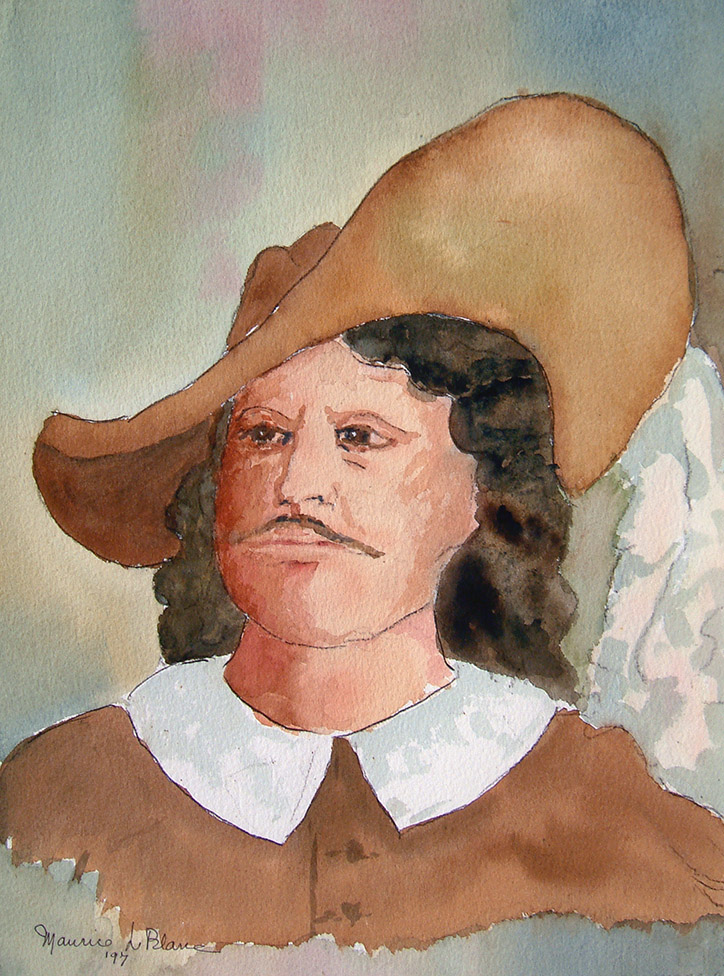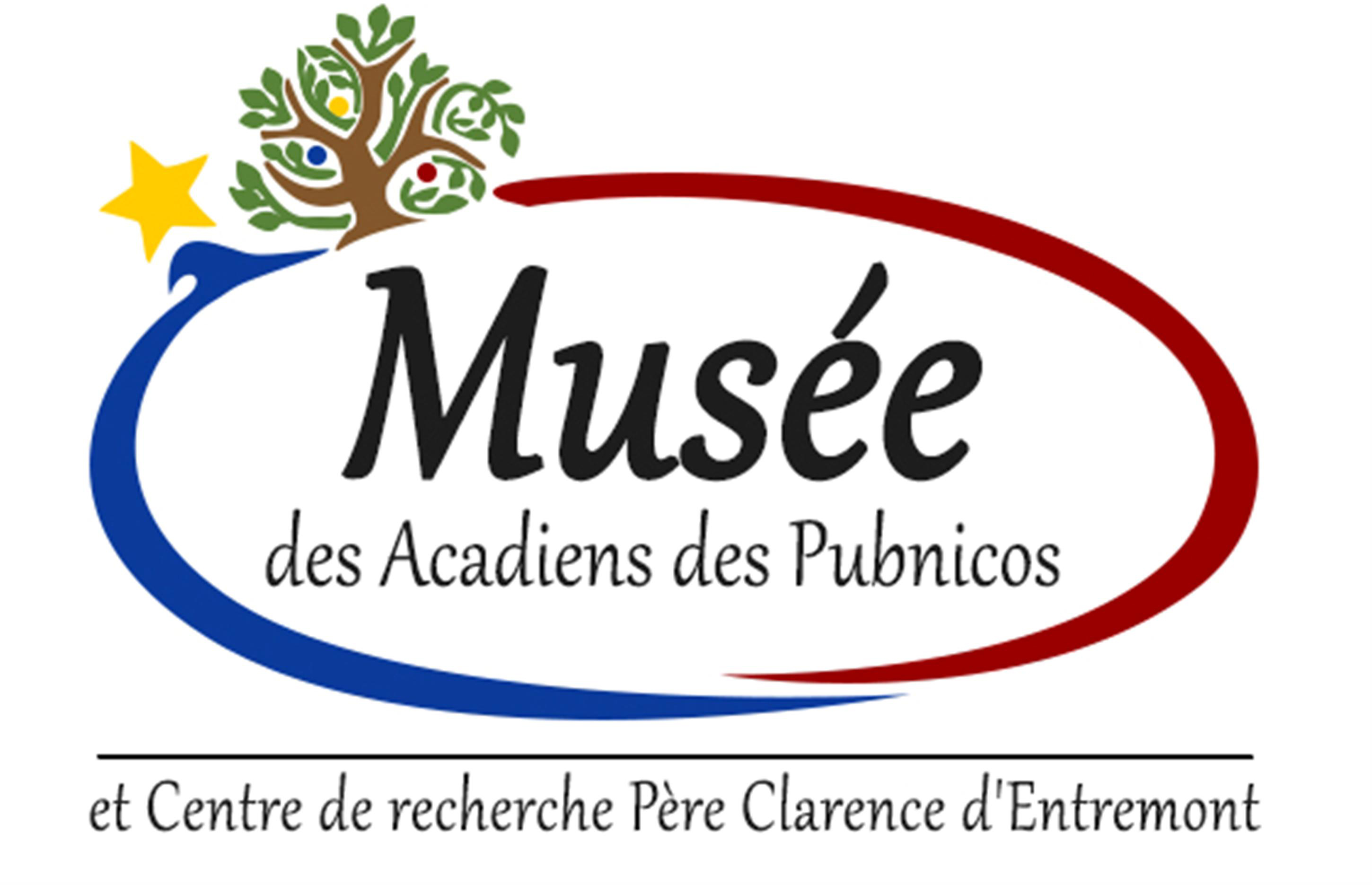Council of Nova Scotia Archives
Musée des Acadiens des Pubnicos et Centre de recherche
Painting of Sieur Philippe Mius-d'Entremont
Sieur Philippe Mius d’Entremont, fondateur de Pobomcoup, le 17 juillet 1653.
Philippe Mius d'Entremont was born in Normandy, France, in 1609. In the Summer of 1651, he left La Rochelle with Charles de La Tour, being accompanied by his wife and an infant daughter. He was coming to Acadia as Major to Charles de La Tour. They arrived in Port Royal around the end of summer. In 1653, Charles de La Tour asked Philippe Mius d'Entremont to take command of Acadia, while he was to be in Quebec during the month of May. June 13, after his return, he told d'Entremont to choose any place in Acadia where he would like to establish himself. He chose Pobomcoup, the Indian name by which Pubnico was known at the time. Five weeks later, July 17, Pobomcoup was granted to Philippe Mius d'Entremont as a barony.
Here are some excerpts of the grant: "There was present and personally certified the high and powerful seigneur Charles de La Tour, Lieutenant General in all of Acadia. He voluntarily acknowledged the receipt and avowed that he had, by these presents, given and relinquished in perpetuity the title of baron and noble fief having the administration of justice, high, mean and low as paramount fief to the nobleman Philippe Mius, Esquire, sieur d'Entremont and Madame Magdeleine Hélie, his wife, who were present and accepted it for themselves and their heirs. In consideration of the particular merit of said Sieur d'Entremont and of the good and faithful services which he has personally rendered to us, we have given and granted and do give and grant by these presents to the said sieur d'Entremont the extent of one league in width and four in depth in the place called Pobomcoup to be enjoyed by the said grantees and successors with the title of baron, in consideration of an on condition of homage and a quichipoly
(an Indian word meaning "a small bag" or "purse" made out of an animal skin) of beaver with two bouquets on the days and feasts of St. John Baptist for each year, and on condition that he occupies and establishes the said places. The said seigneur LaTour has today granted and placed in possession of the said seigneur d'Entremont the said land, fief and barony of Pobomcoup, promising and binding himself accordingly. -- These renunciations were made and passed at the fort of Port Royal on July 17, 1653. In the presence of...".
The land was on the east side of the harbour, measuring one league in width along the shore, and four in depth, that is about four kilometers by sixteen, or two-and-a-half miles by nine or ten. As Hipson's Brook, called also Larkin's Brook, was about the center of the barony, we can suppose that the whole grant comprised all of today's English section of Upper East Pubnico, from the limits of Pubnico Head to the limits of the Acadian village of East Pubnico.
It was granted as a "fief." At the time of the feudal system, especially in the Middle Ages, when a piece of land was granted as a "fief," it meant, among other things, that the grantor was a "seigneur" and that the grantee had to pay him a yearly rent as long as he would possess that land, which, for one reason or another, could be repossessed by the grantor.
This grant made of Philippe Mius d'Entremont a "nobleman" and a "baron." In the scale of nobility at the time, there were kings, princes, counts, barons and marquis. We can be sure that in the case of Philippe Mius d'Entremont it consisted merely of a title, although he was known as such all his life.
It is in the barony that the three sons of Philippe Mius d'Entremont and Magdeleine Hélie were born and a daughter, the youngest of the family.
Moreover, Pubnico, established at the early date of 1653, July 17, is still inhabited [sic] by Acadians, which makes it the OLDEST REGION STILL ACADIAN. It is also the oldest region in all Canada and maybe in all North America where still reside the descendants of its founder.
Reference: Peinture par le Père Maurice LeBlanc dans le Musée des Acadiens des Pu Musée des Acadiens des Pubnicos Rpp no. 21, 2009.23
For more information, please contact the Musée des Acadiens des Pubnicos.


